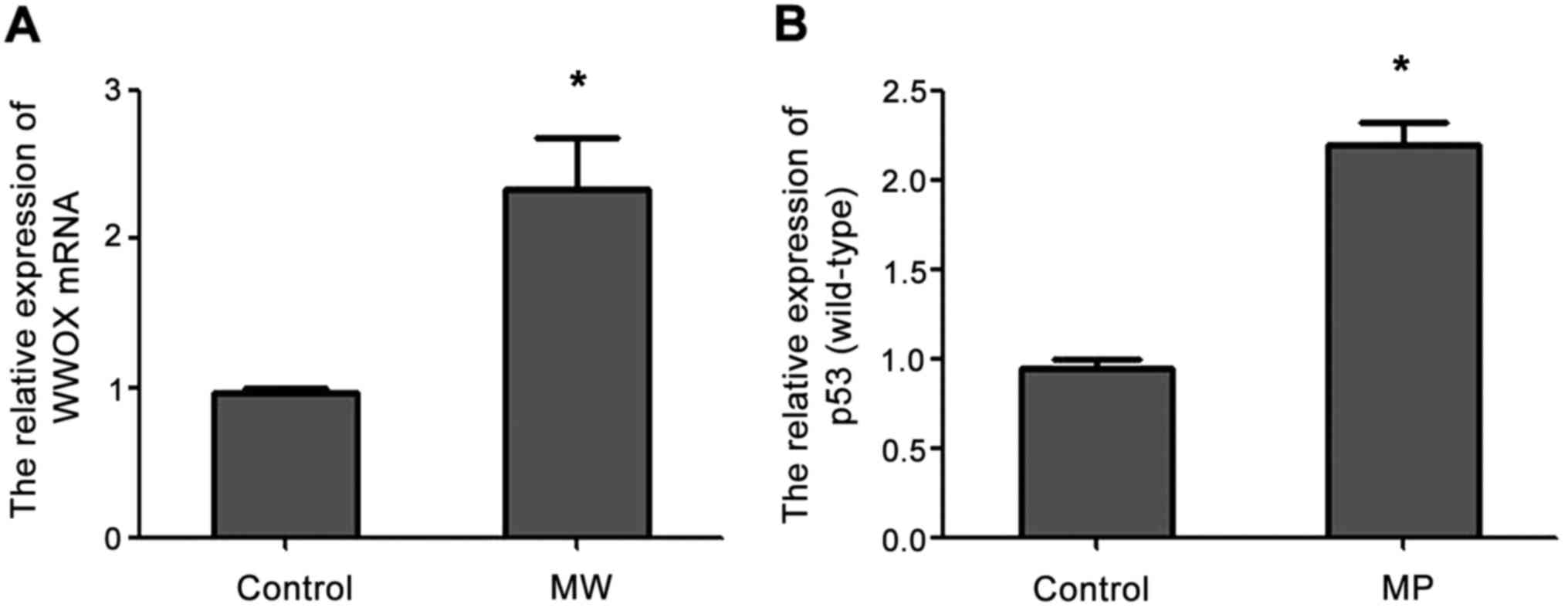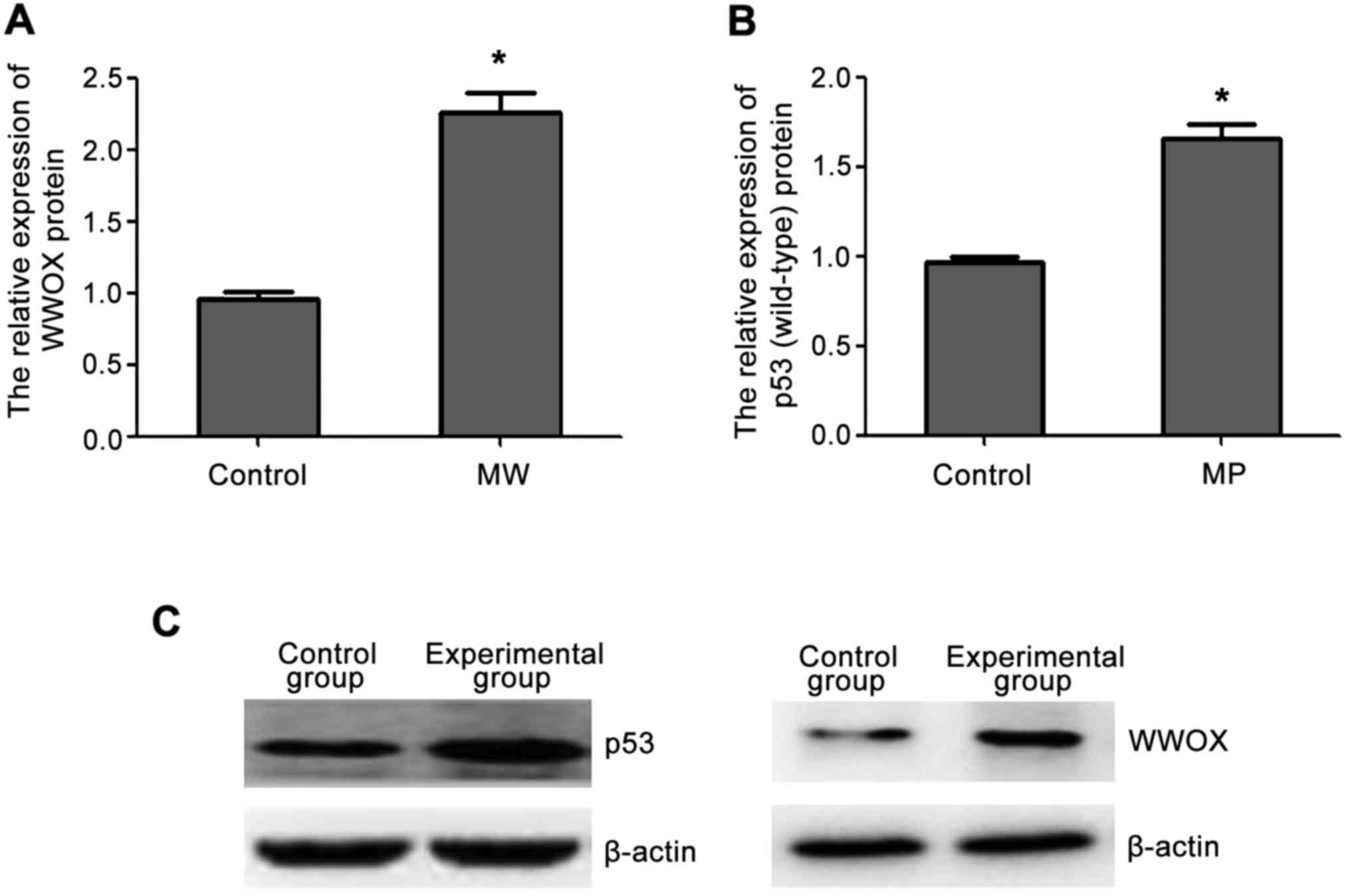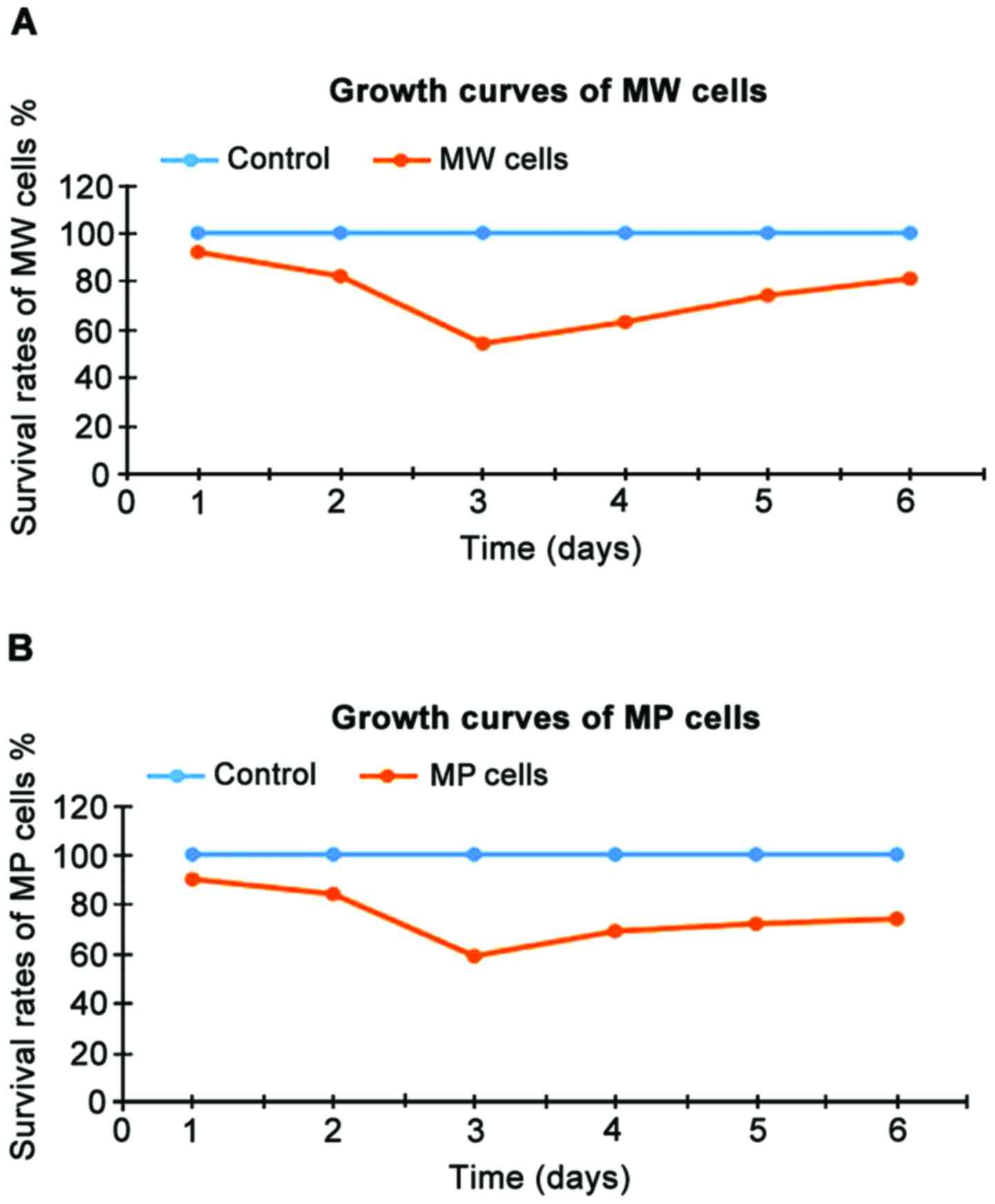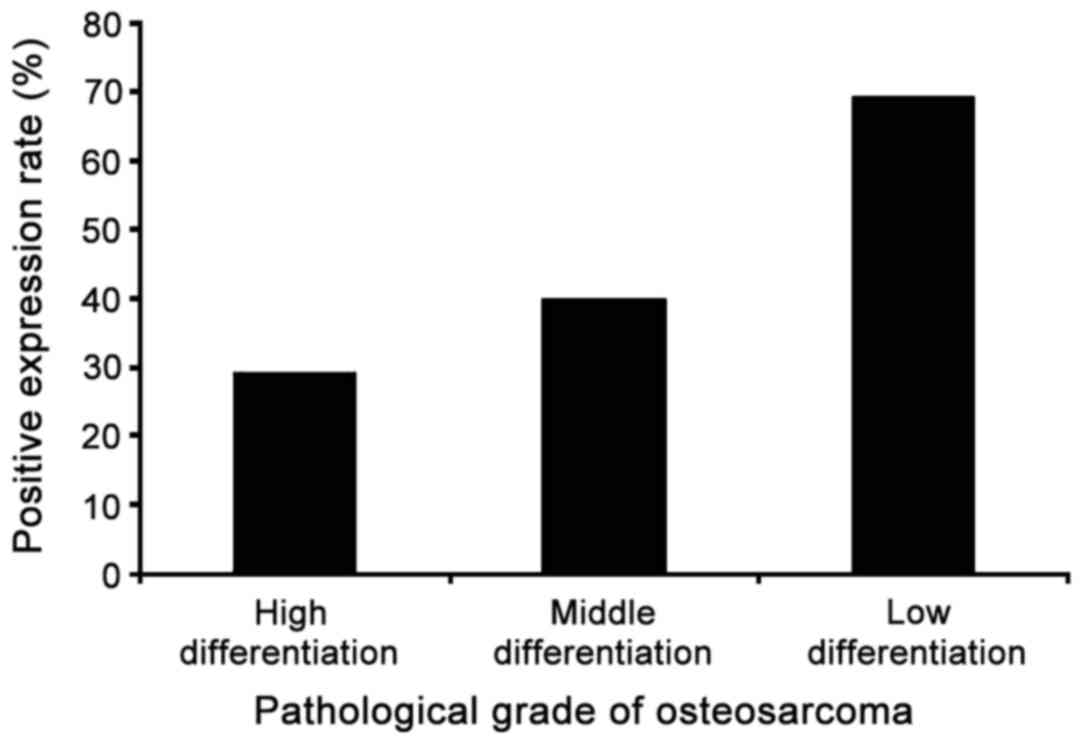Correlation between osteosarcoma and the expression of WWOX and p53
- Authors:
- Published online on: August 10, 2017 https://doi.org/10.3892/ol.2017.6747
- Pages: 4779-4783
-
Copyright: © Liu et al. This is an open access article distributed under the terms of Creative Commons Attribution License.
Metrics:
Total
Views: 0 (Spandidos Publications: | PMC Statistics:
)
Total PDF Downloads: 0 (Spandidos Publications: | PMC Statistics:
)
Abstract
The objective of this study was to analyze the effect of the expression of WWOX and p53 on the growth of MG‑63 osteosarcoma cells and to explore the correlation between osteosarcoma and the expression of WWOX and p53. WWOX and p53‑overexpressing MG‑63 osteosarcoma cell lines were established by transfection and named the MW and MP cell lines, respectively. Untransfected MG‑63 cells (blank control) were used as control. Quantitative polymerase chain reaction (qPCR) and western blot analysis were used to detect the expression of WWOX and wild‑type p53 mRNA and protein, respectively. The effects of WWOX and p53 (wild‑type) on the activity of MG‑63 cells were determined by MTT assay and flow cytometry. The expression of mutant p53 protein in 65 cases of osteosarcoma was detected by immunohistochemistry to analyze the correlation between p53 and the development of osteosarcoma. qPCR showed that WWOX and p53 mRNA was overexpressed in MW and MP cells, respectively. Western blot analysis showed that the levels of WWOX and p53 protein in MW and MP cells were higher than in the blank control group. MTT assay showed that the cell proliferation ability of MW and MP cells was significantly lower than in the blank control group. Flow cytometry showed that 78.49% of MW and 66.76% of MP cells were arrested in the G0/G1 phase. Immunohistochemistry showed that mutant p53 was highly expressed in osteosarcoma, with a positive expression rate of 47.7%. The expression rate was positively correlated with the pathological grade of cancer. In conclusion, WWOX can affect the cell cycle of MG‑63 osteosarcoma cells to inhibit cell proliferation, which provides new insights into gene therapy for osteosarcoma. The two types of the p53 gene have different functions in the development of osteosarcoma. Wild‑type p53 acts as a tumor suppressor, while mutant p53, which is overexpressed in malignant osteosarcoma, has a carcinogenic effect associated with the degree of osteosarcoma.














